When you think about pregnancy, the image that comes to mind is a glowing, mum-to-be with a full belly. You may also think of unprotected sex, family, babies, and a host of other things that pregnancy tends to be associated with. But ask someone what pregnancy is and they’ll most likely say ‘the sperm fertilises the egg and that grows into a baby.’ While this is right, it is not the full story – it’s the abridged version. There’s a lot more to pregnancy than that dumbed-down simplification. Pregnancy is complex and miraculous, and knowing what is really going on gives you genuine and awe-inspiring appreciation for the human body and what it is capable of.
To know exactly what pregnancy is, it is first important to learn what is going on in your body to get pregnant in the first place.
When and How Does Pregnancy Happen?
Most people think that pregnancy happens the minute the sperm fertilizes the egg, and that conception occurs right after you have sex when semen or pre-ejaculate enters the vagina. But those are just bits and pieces of the whole truth. Most people have no clue what happens after sex, and when.
To understand when pregnancy occurs, we have to start at the beginning i.e. right after sexual intercourse.
First keep in mind that pregnancy can occur even if a man pulls out before he ejaculates. Pregnancy can also happen without penetration. When a man is excited, the penis squirts out a fluid known as pre-ejaculate which contains enough sperm to cause pregnancy. If semen or pre-ejaculate gets anywhere near the vulva, it can travel through the vagina and get a woman pregnant.
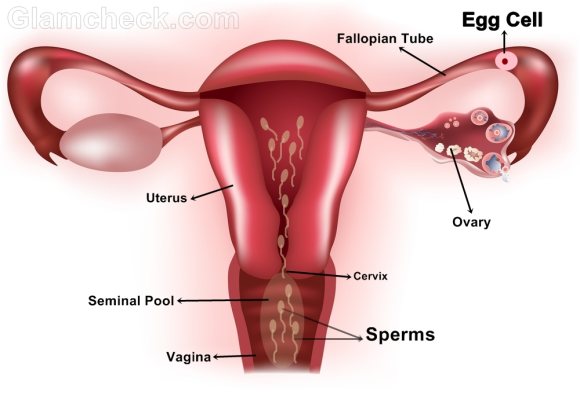 The semen that gets into the vagina during intercourse or foreplay will form a pool in the vagina near the cervix. This is called the seminal pool. The location of the pool is right blow the uterus, in an indentation in the vaginal wall. Here, semen wait to go into the uterus. And contrary to popular belief, douching or taking a shower after sex will not reduce the number of sperm that end up in the seminal pool and will not reduce your chances of pregnancy as semen is safely ensconced in the pool where you can’t reach it.
The semen that gets into the vagina during intercourse or foreplay will form a pool in the vagina near the cervix. This is called the seminal pool. The location of the pool is right blow the uterus, in an indentation in the vaginal wall. Here, semen wait to go into the uterus. And contrary to popular belief, douching or taking a shower after sex will not reduce the number of sperm that end up in the seminal pool and will not reduce your chances of pregnancy as semen is safely ensconced in the pool where you can’t reach it.
- Semen travels into the uterus in waves. For up to six days after sex, the sperm will travel up through the uterus and go into the fallopian tubes.
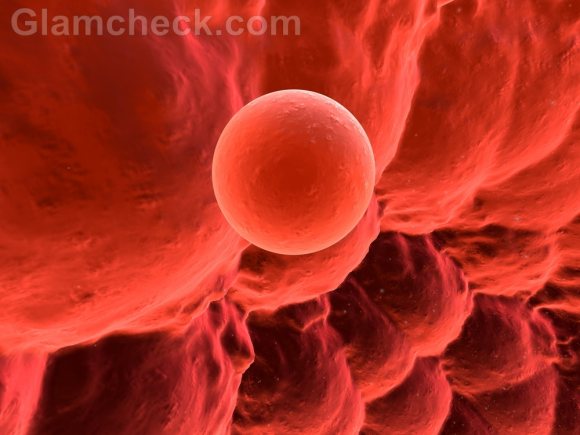 Egg cell moving towards fallopian tube
Egg cell moving towards fallopian tube
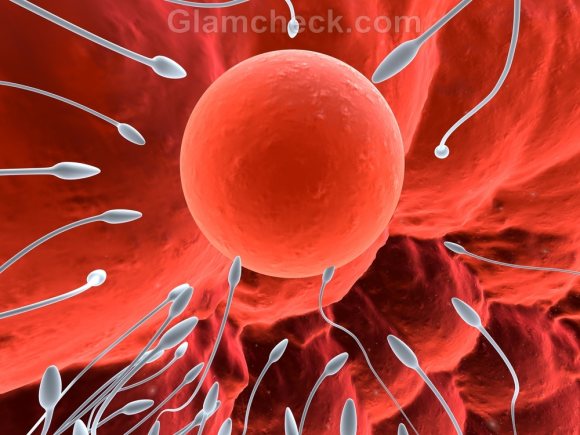 Sperms move towards the egg cell
Sperms move towards the egg cell
- Once in the fallopian tube, the sperm wait for an egg to descend from the ovaries. If a woman is not ovulating when the sperm are in the fallopian tube, then there will be no egg to fertilize and they will simply die away.
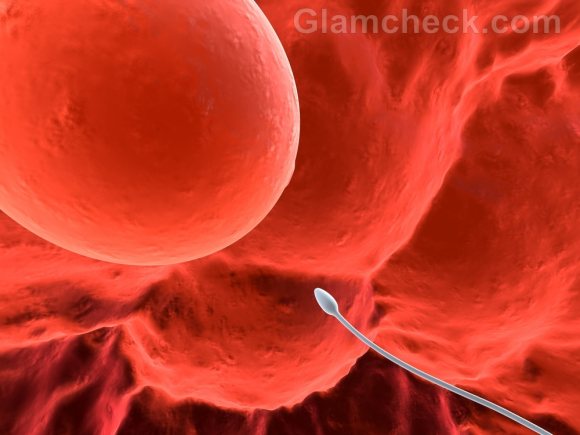 Sperm reaches the egg cell
Sperm reaches the egg cell
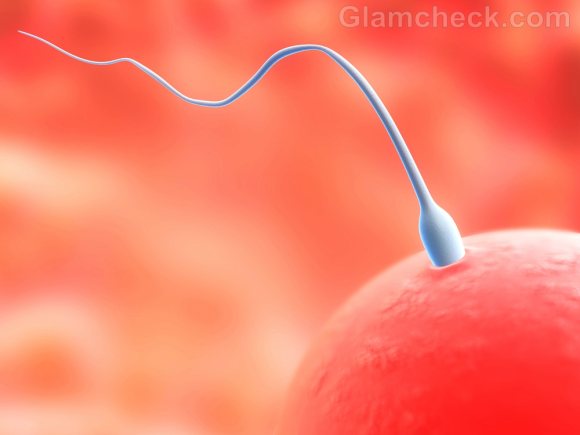 Sperm penetrates the egg cell
Sperm penetrates the egg cell
- New research shows that it is the egg that decides which sperm will fertilize it, rather than the other way around. The previous theory stated that it was survival of the fittest i.e. only the strongest sperm that made it past all the others would fertilize the egg, kind of like on a first come first serve basis. But studies are uncovering that the egg determines which sperm is just right and only allows the chosen one to fertilize it.
So has pregnancy occurred now? Well, not quite.
 Zygote
Zygote
- When the sperm fertilizes the egg, the result is a zygote – a single-celled organism that carries the gene codes of both the parents. The zygote will eventually grow into a baby. But before it can do that, it has to take care of a few other things.
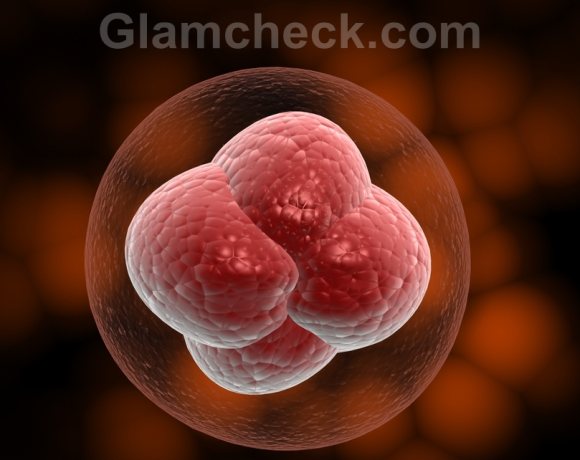 Pre-Embryo
Pre-Embryo
- First, the zygote replicates itself into a multi-cellular organism that is called the pre-embryo. After about 4 days, it will implant itself on the uterine wall. This process can take a couple of days or up to a week. We’re getting closer to the actual pregnancy now.
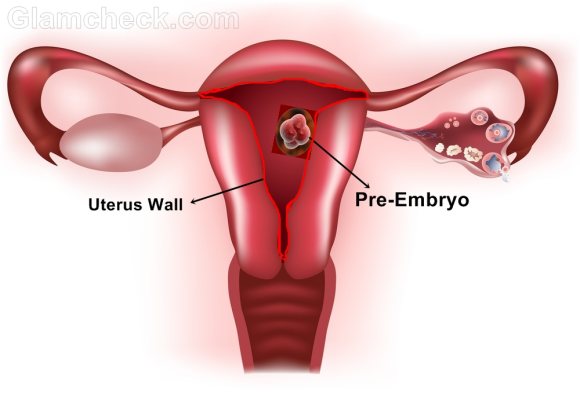 Pre-embryo attaches to uterine wall
Pre-embryo attaches to uterine wall
- The pre-embryo, once snuggled comfortably along the uterine wall, will start to release hormones that prevent menstruation from occurring. So it is effectively shutting off the body’s ability to produce more eggs for fertilization. This is why your period stops during pregnancy.
- And it is only once those hormones have been released that pregnancy is said to have begun. Now all your reproductive systems efforts will be focused on nourishing and protecting the embryo.
So how long exactly does it take to get pregnant after the semen has entered the vagina? It could take up to six days simply for the egg to be fertilized in the fallopian tube, and another six days for the fertilized egg to implant itself into the uterus. This is why, even if you have sex on the exact day and at the exact time that you are ovulating, a home pregnancy test shows a negative result if taken too soon after.
 Once firmly implanted in the uterine wall, the pre-embryo is called an embryo for about 6 to 8 weeks, after which it will be called a foetus. A human female will carry the embryo and foetus for approximately 38 to 42 weeks or around 9 months before she gives birth to a baby. This carrying of the foetus in the womb is what pregnancy is about. So as to more conveniently calculate the date of birth of the baby, pregnancy may be assumed to begin from the date of conception rather than from the date of implantation, since it is difficult to know when the latter occurs.
Once firmly implanted in the uterine wall, the pre-embryo is called an embryo for about 6 to 8 weeks, after which it will be called a foetus. A human female will carry the embryo and foetus for approximately 38 to 42 weeks or around 9 months before she gives birth to a baby. This carrying of the foetus in the womb is what pregnancy is about. So as to more conveniently calculate the date of birth of the baby, pregnancy may be assumed to begin from the date of conception rather than from the date of implantation, since it is difficult to know when the latter occurs.
Image: Shutterstock
